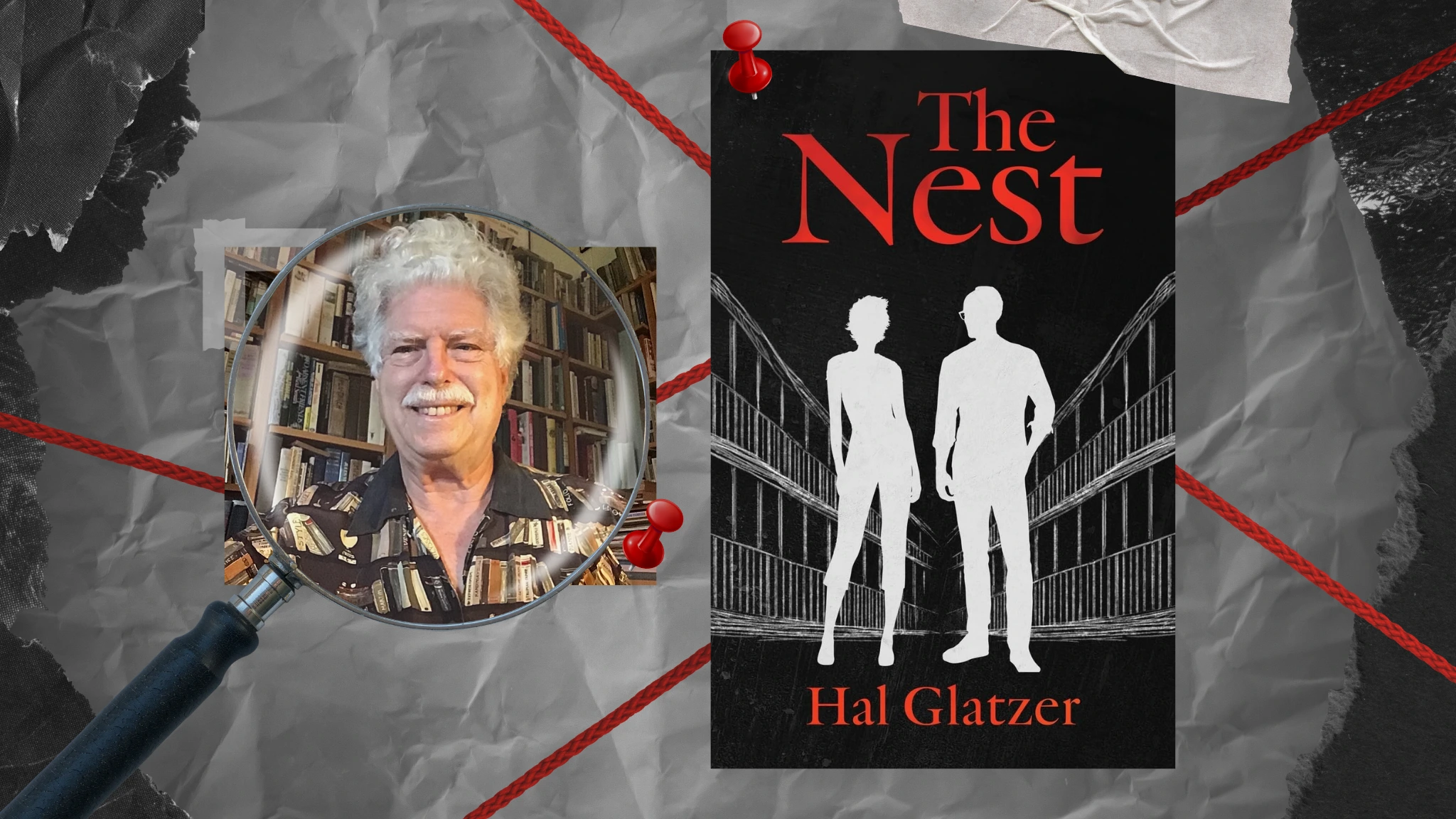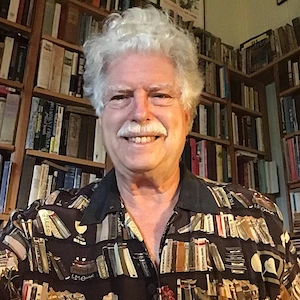In the world of literary arts and beyond, few names resonate with such diverse and profound creativity as Hal Glatzer. A distinguished author, journalist and musician, Glatzer’s career spans decades and genres, from gripping mystery novels to evocative jazz performances.
Hal Glatzer wrote his first piece of fiction in elementary school. He submitted The Mysterious Island to his third-grade teacher, who handed it back with this critique: “Great imagination. Terrible handwriting.”
In his most recent work, The Nest, Herman and Teddie are a playful, affectionate couple in their sixties. One morning, they discover the body of the landlord under their apartment’s balcony. Everyone says it was an accident, but the homicide detective believes it was murder and starts building a case against them. They set out to discover what really happened. But they are not the typical husband and wife one finds in traditional cozies. They have a secret they must conceal and protect.
In this recent BookTrib Q&A, the author talks about his work and his writing life.
Q: What inspired you to transition from journalism to writing mystery novels?
A: In the 1970s, I started covering the emerging high-tech industries. I wrote for and/or edited several of the “computer magazines” that were launched in the 1980s. I wrote four non-fiction books about computers and telecommunications that were published, as well as a mystery-thriller, The Trapdoor, about a computer hacker who gets in trouble with organized crime. By the mid-1990s, though, the internet and its search engines had killed the market for consumer magazines covering high tech. So I returned to writing fiction mostly but not exclusively historical fiction. Except for some theater reviewing here in New York, mysteries are what I write now.
Q: Can you share a memorable experience from your time as a journalist that influenced your writing?
A: In the 1970s I was shooting 16mm news film for the ABC-TV affiliate in Honolulu when a colleague showed me her handheld Sony video camera and videotape recorder. I knew the advantages of video over film, but miniaturization made its future clear. I set out to explore the new digital technologies, and that led me to cover the new “personal” computers as well. As a journalist I had found my ideal “beat” early enough to interview almost all of the pioneers. But I also came to understand what motivated smart people to dive so deeply into technology, get good at it, and be swallowed up by it.
Q: How do you develop the intricate plots and characters in your mystery novels?
A: A mystery writer is usually either a “plotter” or a “pantser.” Plotters work out everything in advance. They may thumbtack index cards to a bulletin board or write detailed outlines and synopses; but (like Michaelangelo, who visualized the finished sculpture before setting chisel to marble) they have essentially written the book before they type the first page. Pantsers work by the seat of their pants. They start with solid ideas for the plot and the main characters and pretty much let the story evolve as they go along, adding and subtracting subplots and secondary characters until they are satisfied that the novel is complete. (Full disclosure: I’m a pantser.)
As for characters, every fiction writer knows that no matter how far in advance they are conceived, characters have a life of their own. Once you create a character, he or she will demand to be seen and heard from, and more often than even a plotter may have planned. Put them into a dialog, and they will start talking by themselves. Best advice: Let them.
Q: Which of your books is your personal favorite, and why?
A: My youngest, The Nest, and its sequel, The Office Wife (due out in 2025) hold a special place in my heart for being set in the present day, whereas most of my novels are set in the past. Dead In His Tracks, which took years to research and write, is the story I felt the greatest compulsion to tell. But my audio-play Too Dead to Swing, narrated in the first person by my heroine and performed (with songs I wrote) by a full-cast of New York actors and Nashville musicians—that is my chef d’oeuvre.
Q: How do you balance historical accuracy with creative storytelling in your novels?
A: I’m scrupulous. In The Last Full Measure, my heroine Katy Green is aboard the S.S. Lurline during the actual dates it sailed to and from Hawaii just before Pearl Harbor. I wrote with the deck plan tacked to the wall beside my desk, so I could realistically move everyone around the ship.
Dead In His Tracks chronicles the rise and fall of a family-owned streetcar empire in the first half of the 20th century. I based it on the history of a real streetcar network. I rode streetcars in cities where they were still running, including San Francisco, where I was living at the time. I visited streetcar and trolly museums, read a dozen illustrated books about actual streetcar lines, and (this was before the internet) went in person to the federal archives on the south side of Chicago to read and take notes from the transcript of the antitrust case against the corporate conspirators who almost killed off all the streetcar lines in America.
I do feel that every historical novel is, by its very nature, fictional. Its characters were never alive in that time and thus could not meet the real people or move through the real locations that lend verisimilitude to the novel. But as long as my characters do not change history or the dates of historical events; and as long as they do not alter the lives of real people, or speak or behave in some anachronistic way, I can pretty much send them into any era and make them do whatever I want.
Q: How do you incorporate your love for music into your writing process and storytelling?
A: I play and sing the popular music of the 1920s and ’30s from Tin Pan Alley and Broadway. So for a three-book series (two of which are also audio-plays) I created Katy Green: a working musician in the years just before World War II, whose gigs plunge her into mysteries.
Q: Can you share any interesting anecdotes or behind-the-scenes stories from your experiences in the business?
A: Too Dead to Swing was the first of my Katy Green mysteries to be published in 1999. But A Fugue in Hell’s Kitchen was the first to be written, in 1993. Set in and around a classical music conservatory in what was then New York’s roughest neighborhood, Katy rescues a friend accused of stealing a valuable music manuscript. Originally titled West Side of Trouble, I submitted the first four chapters for consideration to the editor of the Nancy Drew series.
Nancy had been a self-reliant sixteen, driving her own car, when I read the stories in the 1950s—just as she’d been when Mildred Wirt (“Carolyn Keene”) created her in the 1930s. But when the editor sent me the official writers’ guidelines, I discovered that the series of the 1990s was pitched to “tweens,” and its Nancy was a 15-year-old schoolgirl. So I wasn’t surprised when my manuscript chapters were politely rejected because the plot was “too mature.” I realized that it would work out better, and attract an older readership, with a grown-up heroine. And the musical milieu suggested she be not merely a friend to the suspected thief but a working musician herself who’d had classical training. Thus Katy Green was born.
The Nest is available for purchase on Amazon, Barnes & Noble and Bookshop.
Read the original article here




